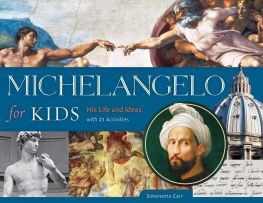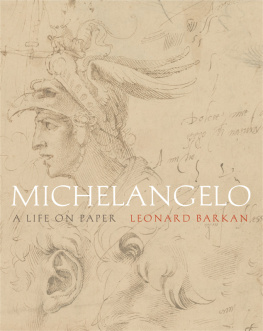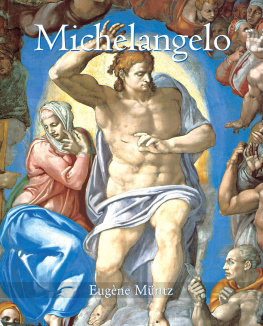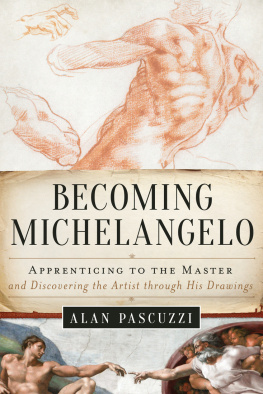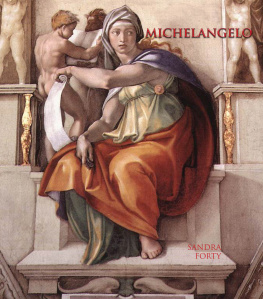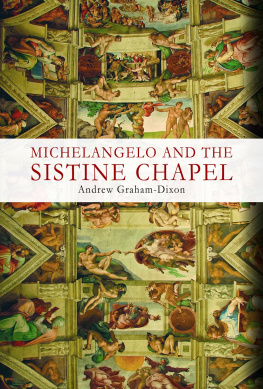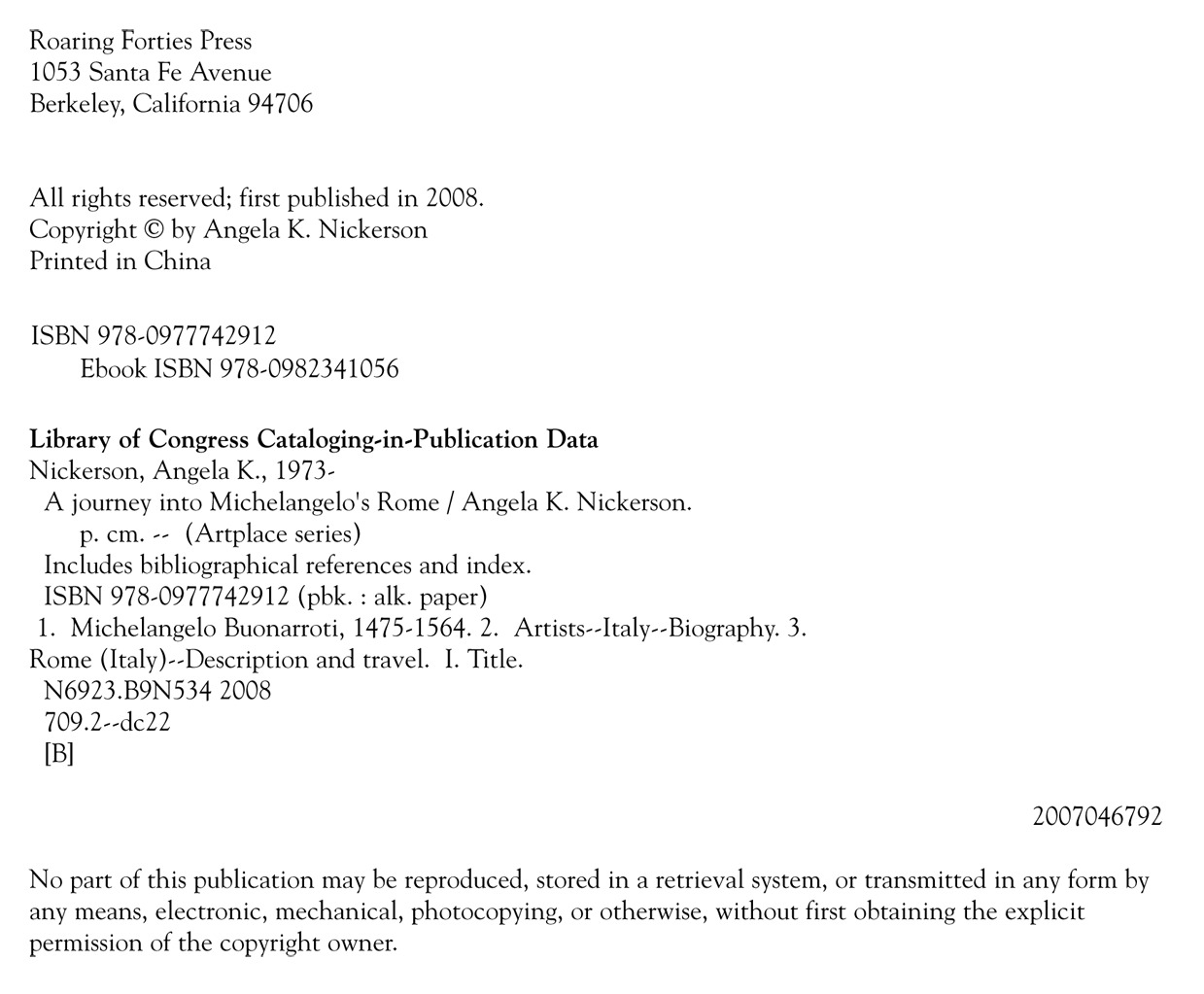Acknowledgement
When I married a Roman in 1998, I had no idea that I was also marrying a city, but that is indeed what happened. My first trip to Rome in 2001 with Romano was one of discovery and true love. As we sat in the Colosseum, Romano sketching and the sun setting, I knew that I would never truly leave. And then, as I stood in the Sistine Chapel, a magnificent creation that I had long heard about and studied, my life changed permanently. I was awestruck.
When Roaring Forties Press put out a call for book proposals, I doubt they expected to hear from someone like me. But they took a chance on someone untested and green. For that, I am profoundly thankful. Nigel Quinney and Deirdre Greenes mentoring, patience, and constant encouragement have made me a better writer and editor.
I owe many thanks to Dr. William Wallace. His understanding of Michelangelos spirituality encouraged me to explore the topic myself, giving this book a rounder, fuller dimension.
My colleagues and friends at St. Johns Lutheran Church were unfailingly supportive and curious. Pastor Scot Sorensen embraced the wireless culture, allowing me to fulfill my work commitments while halfway around the world.
Gregory Favre read the manuscript and in subtle tones encouraged me to abandon the dictum of teaching (say everything five times in five different ways). Through his encouragement, I learned to trust my own voice and my readers as well.
To all of those teachers, including Pat Grisak, Jane Robbins, Steve Swanson, and Diana Postlethwaite, who shaped my writing and taught me the mechanics and ethics of research: thank you. Thanks also to my grandparents, who grew up in tiny Midwestern towns, went on to become citizens of the world, and then taught their grandchildren to do the same. Traveling is like writing: it takes time and practice to do it well. I attribute the gypsy in me to their influence.
I found friends all over the city of Rome. Dr. Irene Iacopi and Maurizio Rulli, as well as the staff at the Soprintendenza Archeologica di Roma, were exceedingly helpful. Padre Luigi Mezzadri at San Silvestro al Quirinale guided me to the balcony where Michelangelo and Vittoria Colonna spent so many hours talking. And everywhere I went, the people of Romefrom the singing cab drivers to the flirtatious policemenwelcomed me and helped me along the way.
My family sustained me day to day. My mom, who traveled with me as my research assistant, deserves a medal for listening to my incessant prattle as we sprinted from church to museum. My sister, Lisa, listened too, and always asked questions. My dad sent me hilarious e-mails and kept me laughing through the stomach flu and stolen luggage. Sincere thanks also to the rest of my family and friends, who made me feel like a celebrity and who have vowed to buy a zillion copies of this book.
But truly it is my husband, Romano, who deserves the most thanks. He did the laundry and the dishes and cooked and cleaned and gardened for months on end while I worked. He explained the mysteries of building domes and reassured me that cutting the manuscript in half was actually a good thing. And his memories of camping on the beach at Ostia and romping through the ruins took us back to the Italy of his childhood.
Martin Luther wrote of the connection between education and vocation, insisting that through education we discover our gifts, which we then should use for the greater good. Michelangelo believed much the same, finding holiness and spiritual connection in the ring of chisel against marble. This book represents a fusion of art, literature, spirituality, history, and travelthe things about which I am most passionate. When my mother took me to an exhibit about Pompeii as a child ... when my father read Tom Sawyer to me at night ... when my teachers encouraged my passion for the Pre-Raphaelites ... when my grandparents took me to the USSR ... they were all equipping me for this project and helping me to discover my own gifts.
I am so blessed to have been given this vocation.
Chapter 1
The Meaning of Perfection
Michelangelo and His Times
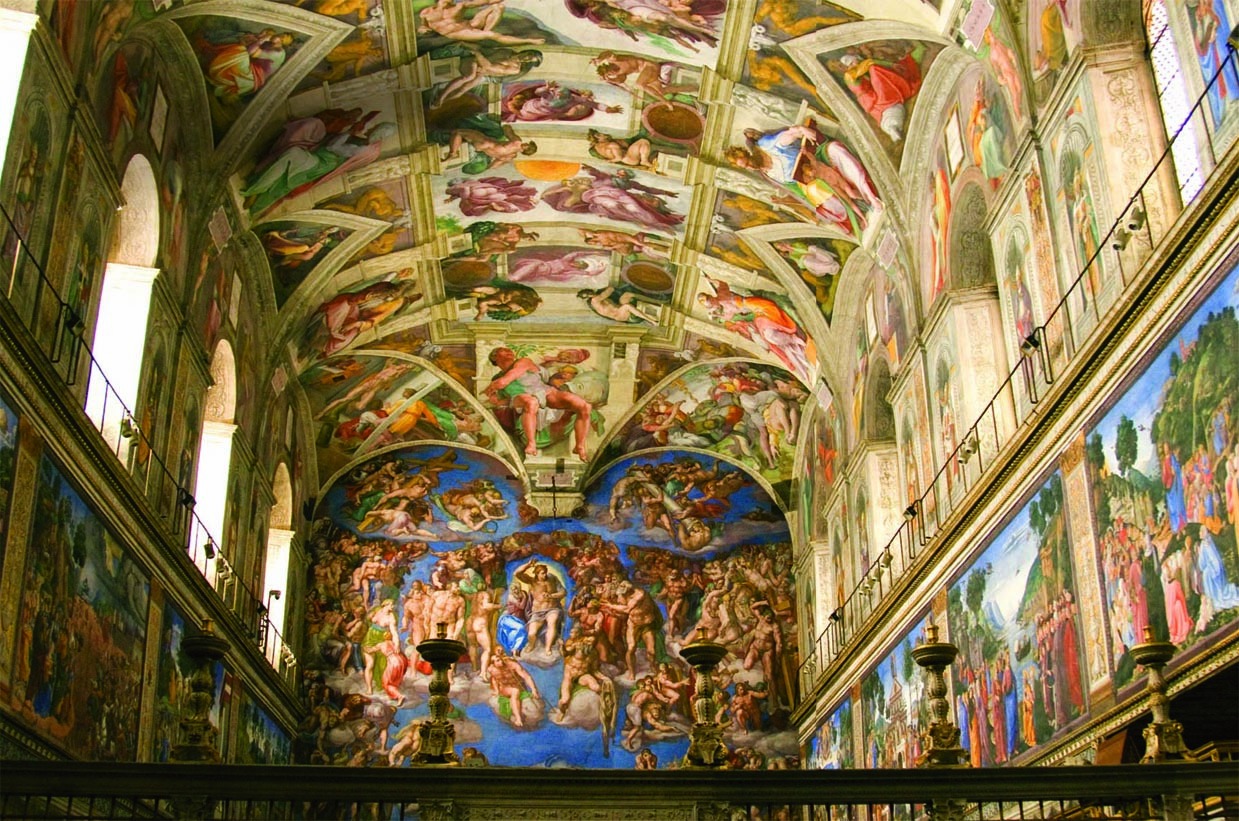
Michelangelos work in the Sistine Chapel is today revered as an icon of the Renaissance but provoked controversy at the time.
On March 6, 1475, Michelangelo Buonarroti was born to poor aristocrats in Caprese, near Florence. Barely thirty years later, he was hailed throughout Italy and much of Europe as one of the greatest artists of all time, a judgment of which he was keenly aware and that he would bemoan yet try to preserve throughout his life.
Michelangelos artistic contributions redefined Rome as the self-proclaimed capital of the world. In turn, the world celebrated the artist for his redefinition of beauty and expression, reclaiming the word geniusa term resurrected from the Latinto describe this singular artists talents. Michelangelos contemporaries struggled to describe the phenomenal talents of a man whose work surpassed all superlatives. According to one of Michelangelos friends and biographers, Giorgio Vasari, God sent to earth a spirit who, working alone, was able to demonstrate in every art and every profession the meaning of perfection. Although many artists fade from popularity as styles and tastes change, Michelangelos golden reputation has never tarnished. More than five hundred years since his death, visitors still flock to see the frescoes, sculptures, and architecture with which Michelangelo adorned Rome.
A New Italy
The world into which Michelangelo was born was in the midst of a cultural and intellectual revolution, a revolution that Michelangelos contemporaries called the rinascita and that we know as the Renaissance. Today, the Renaissancewhich swept Europe from the fourteenth to the seventeenth centuriesis probably best known for its innovations in art. But the artistic leaps of the Renaissance did not happen in a vacuum. They arose within a maelstrom of enormously potent political, economic, and social change. In Italy, the winds of change transformed a collection of warring principalities and city-states into the continents mercantile and cultural powerhouse.
The seeds of the Renaissance germinated in the grimmest of soils: the Black Death. The pandemic of bubonic plague that Italian merchants unwittingly brought to Europe from Asia in 1348 quickly swept over the Italian peninsula and then the rest of Europe, leaving millions dead and opening the door to poverty and war. In the wake of the Black Death, the city-states and kingdoms of Florence, Pisa, Milan, Naples, and Venice battled one another for dominance, while Rome, once indomitable, fell from contention. The papacy, the single wealthiest and most powerful force on the peninsula, was riven by division and moved from Rome to France.
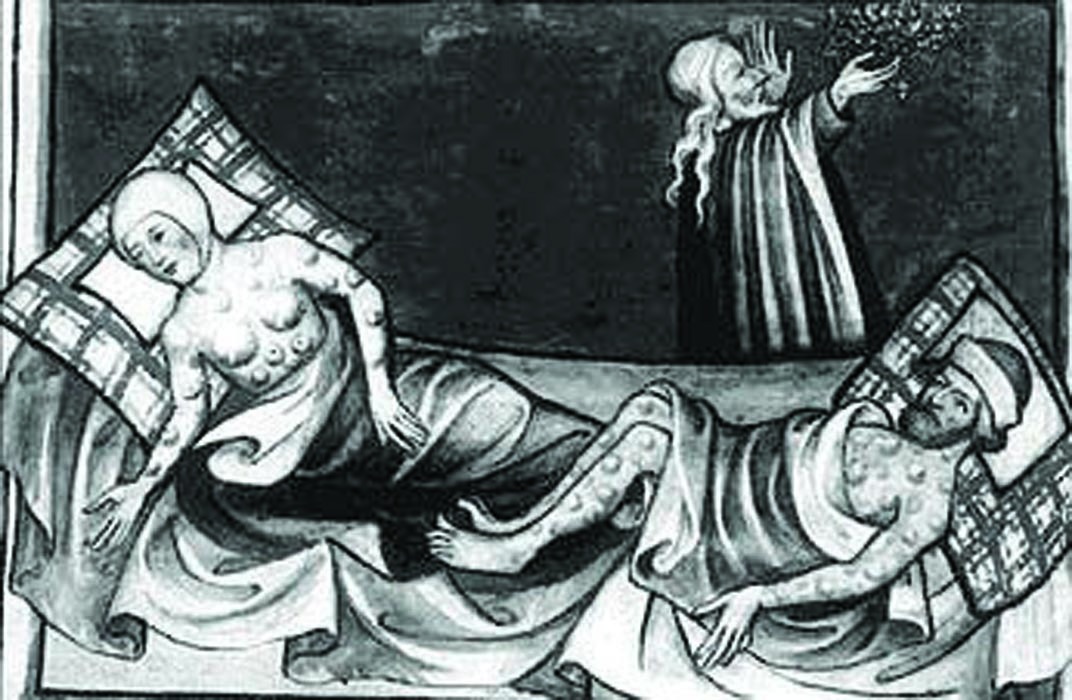
The Black Death of the mid-1300s killed 2030 million people in Europe, between one-third and one-half of the entire population.
But by the mid-1400s, despite the continued clashes between city-states, the environment on the peninsula had changed markedly. The papacy had returned to Rome, bringing with it a moneyed, cultured, and educated population. Venice had emerged as the center of the shipping and shipbuilding industries and become a gateway for the vigorous flow of money and goods in and out of Italy. Italy had established itself as Europes door to the Middle East and Asia.


